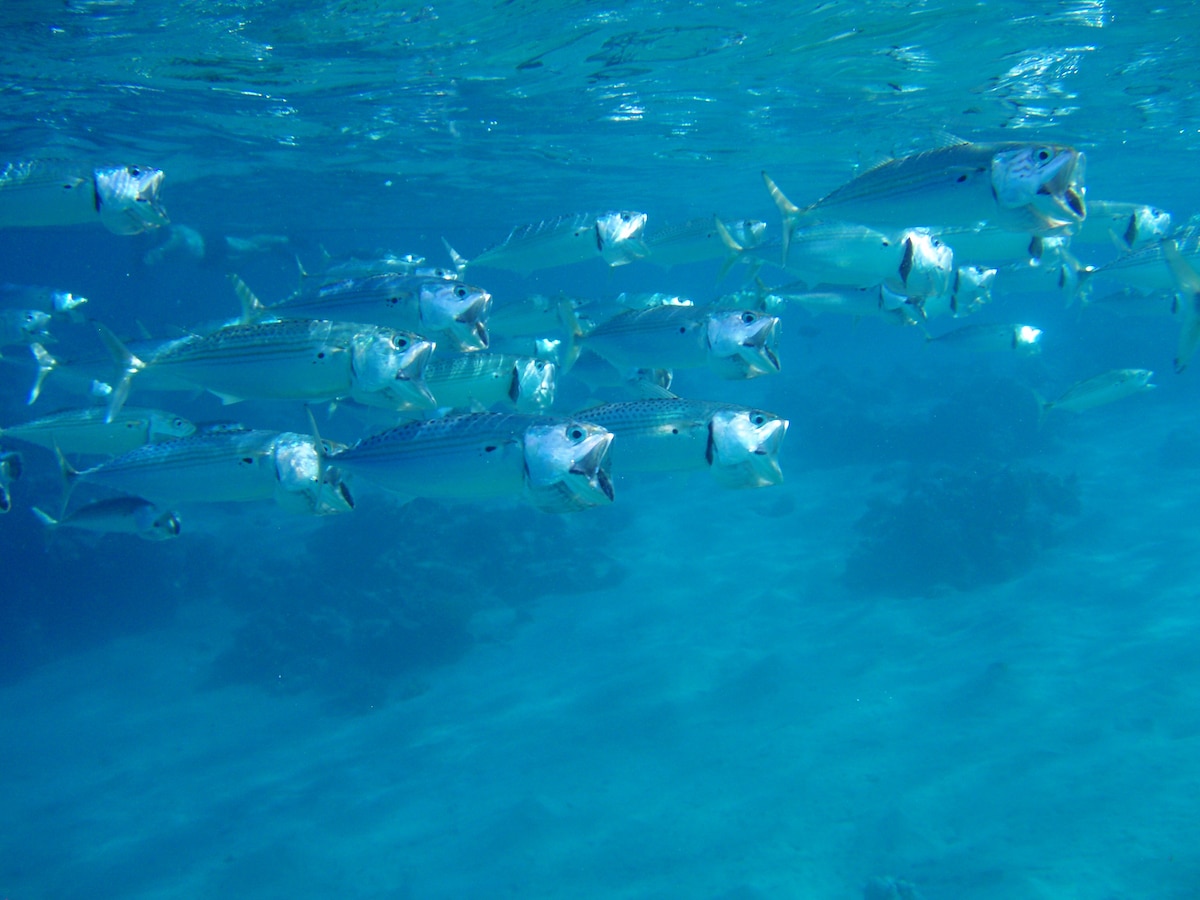Good Fish Guide Says Northeast Atlantic Mackerel Fishery Has Become Unsustainable

 Why you can trust us
Why you can trust us
Founded in 2005 as an Ohio-based environmental newspaper, EcoWatch is a digital platform dedicated to publishing quality, science-based content on environmental issues, causes, and solutions.
If you are trying to stick with sustainable seafood, don’t buy mackerel.
That’s the latest recommendation of the UK-based Marine Conservation Society’s (MCS) Good Fish Guide, which rates popular fish as “Best Choice” (green), “OK-Needs Improvement” (amber) or “Fish to Avoid” (red).
“Unfortunately, Northeast Atlantic mackerel has moved on to the amber list, having been on the charity’s green list since before 2011,” the MCS wrote in a press release. “Populations of mackerel in the past have been large enough to withstand fishing, however, in recent years the population has been in steady decline.”
The guide is updated twice a year. The latest update reviewed 186 different entries, moving 20 to the “Fish to Avoid” category and 15 to the “Best Choice.” Northeast Atlantic mackerel sits in the middle ground — it’s not sustainable now, but could be if the countries that fish it could agree on quotas.
Norway, Iceland, the UK and the EU, among other countries, all fish for mackerel. While each nation says it agrees fishing should not go beyond the recommendations of scientists, they struggle to divide a sustainable catch between them. Because of this, quotas have overpassed scientific advice by as much as 80 percent in some of the years since 2009. In 2022, the countries agreed to a total quota of 794,920 tonnes, but still overfished it to haul in 1,131,416 tonnes, Sky News reported.
But ocean ecosystems — already under pressure from the climate crisis — need mackerel. Tuna, whales and dolphins all rely on it for their diets, MCS noted. Despite this, nations met in March to set more sustainable mackerel quotas and have not yet reached an agreement, though talks continue.
“International cooperation is the only way to fix this problem, and UK governments must lead by example,” Good Fish Guide manager Charlotte Coombes said in the press release. “We need to see countries agree on quotas, and extra management measures being put in place to protect stocks.”
In response, a spokesperson from the country’s Department for Environment, Food and Rural Affairs said the government was committed to negotiations.
“The UK is working intensively with its partners to agree [to] a range of management measures designed to improve the long-term sustainability of mackerel stock, in addition to a new quota sharing arrangement,” the spokesperson said in a statement reported by The Guardian. “We will continue to work with those partners, in consultation with stakeholders, to establish the most effective range of measures to ensure the long-term health of the stock.”
In the meantime, environmentally minded mackerel lovers can still eat wild mackerel caught with a hook and line off the UK’s southwest coast.
“Handlining for mackerel in the southwest UK is controlled by management measures that keep catches at low levels and protect juvenile mackerel,” the guide said. “It is a low impact method, as there are no habitat impacts and bycatch can be released alive.”
Wild-caught Pacific salmon and North Sea herring are also both “Best Choice” fish and good mackerel replacements, MCS said.
One fish that remains on the red list is the European eel.
“Eel is still appearing on menus across the country, despite being more endangered than the Bengal tiger,” MCS sustainable seafood advocate Jack Clarke said in a statement reported by The Guardian. “Populations have declined by as much as 95% in the past decade and recent scientific advice couldn’t be clearer — it’s time to stop eating eel. It’s the most trafficked animal on the planet, with an illegal eel trade estimated to be worth £2.5bn every year.”
Subscribe to get exclusive updates in our daily newsletter!
By signing up, you agree to the Terms of Use and Privacy Policy & to receive electronic communications from EcoWatch Media Group, which may include marketing promotions, advertisements and sponsored content.

 233k
233k  41k
41k  Subscribe
Subscribe 




